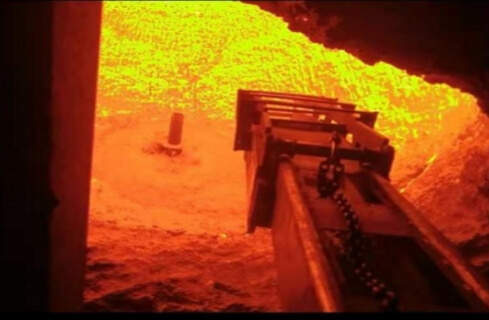
Henan Changxing Refractory Material Co.,Ltd.
Industry Dynamic
Providing Free technical guidance & Best Products
Emai: info@cxrefractories.com
High-performance converter taphole self-flowing pouring repair technology
In the converter lining, the taphole is the only channel for molten steel to enter the ladle from the converter. Due to the erosion and oxidation corrosion of high-temperature molten steel and the harsh working conditions, the taphole generally has a short lifespan and needs to be constantly repaired or replaced during the furnace maintenance process, which not only affects the production rhythm, but also directly affects the quality of molten steel. Therefore, how to extend the service life of the taphole has attracted widespread attention in the industry.
Commonly used repair materials for converter tapholes include traditional dry gunning materials and magnesia-chromium castables. Traditional dry gunning materials, due to the inclusion of low-melting-point inorganic salts, uncertainty about water addition, short mixing time, fine particle size, and poor spalling resistance, result in a loose structure and low strength. This results in a short lifespan that fails to meet converter requirements. Therefore, magnesia-chromium castables are currently more commonly used on-site to slow taphole damage. However, due to the limitations of the converter hot patching construction conditions, the magnesia-chromium castable needs to be manually stirred with a shovel on site, pushed to the back of the furnace with a cart, and then manually turned over to put the castable into the furnace. Affected by the high temperature of the furnace lining and the inaccuracy caused by long-distance throwing, the castable cannot be completely and accurately poured into the gap between the steel outlet sleeve and the seat brick. It is necessary to use a tap water pipe to flush and brush the castable, which not only causes hidden damage to the hot brick lining, but also leads to problems such as the material being not resistant to high-temperature slag erosion, low strength, and short service life. At the same time, because the magnesia-chromium castable contains a certain proportion of chromium oxide, it seriously pollutes the on-site environment and has a very adverse effect on the health of construction workers.

The situation of the converter tapping port being poured
To address this issue, Beijing Lianhe Rongda has developed a complete pouring, filling, and repair device and process, enabling the complete mixing, conveying, and pouring of magnesia self-flowing castables. This technology addresses the challenges of excessive water addition (up to 30%) in traditional dry-method gunning mixes and the difficulty of precise manual application in the harsh, high-temperature environment of magnesia-chromium castables. It enables the magnesia self-flowing material to flow quickly and accurately into the gap between the taphole casing and the base bricks, distributing it evenly and fully filling the gap. This technology features a dense structure, excellent bonding properties, and high explosion resistance, ensuring the taphole casing reaches its optimal design service life and simplifying, equipment-based, and safer on-site construction. Furthermore, due to the low water addition requirement (down to 5%) and high thermal fluidity of the self-flowing material, it significantly shortens the material's sintering time, making it a first for converter taphole replacement and repair both domestically and internationally.

Converter Furnace Patching Material
E-mail:info@cxrefractories.com
Tel:+86-371-88888998
Fax:+86-371-88886886
Address:South Tower, Greenland Central Plaza, Zhengzhou, Henan Province, China
















